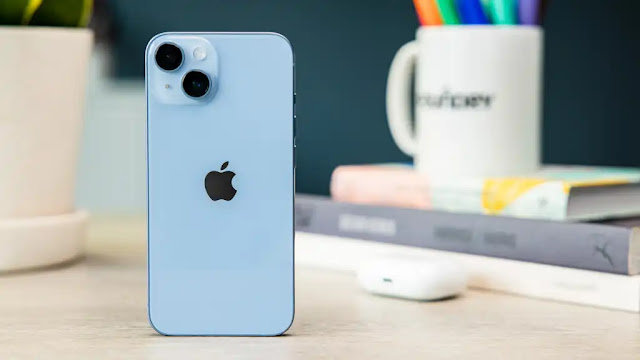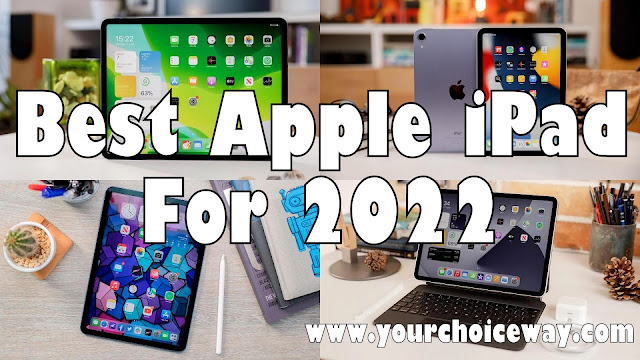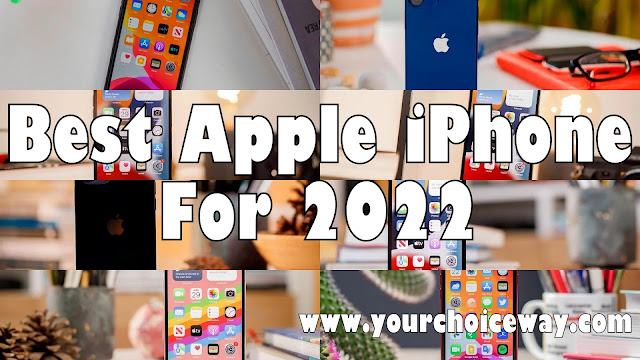Apple is good at making you want things you may not need or want in your life. Adding 4G to the Apple Watch might be another instance of this, even if it is technically great
The Series 3 with LTE does what it set out to do, but it is a bridge product. We are not in a sci-fi world where everyone wants a watch to make calls instead of a smartphone.
Apple has nailed the integration way better than any other manufacturer, but with network restrictions and a high price – and limited practical use cases – it isn’t going to become mainstream yet. But remember that you can buy the Series 3 Apple Watch without LTE, and save yourself some money on this aspect.
Perhaps we’ll look back on this Watch as a watershed moment when people started putting their phones down and got outside. But the messaging is blurred from Apple; sure, you can go out on your surf board and take a call in the sand, but most people won’t leave their phone at home for longer than an hour or two, really.
The LTE aspect works best as a backup when your phone dies, and performance is consistent. Otherwise, this is really a Series 2 Apple Watch with a whole lot more to prove in the wider market, even if Apple does think it’s the biggest watch brand in the world.
Price When Reviewed
- From $199
How many worlds has Apple left to conquer? It its lifetime it has triumphed with computer, phone, tablet and watch. So, in 2017, does the world need an Apple computer inside an Apple Watch, with an Apple phone attached? It’s got it with the Apple Watch Series 3.
The Apple Watch is the newest pillar of Apple’s product line, joining the Mac, iPhone and iPad in the company’s ecosystem. If you use all four, I’d say you find the first two indispensable, and the second two nice to have.
The Watch is curious in that it’s Apple cheapest yet arguably most luxurious staple product. You don’t really need a smartwatch; you do need a phone. The Series 2 Apple Watch was a great refinement of the first generation, fixing performance and software issues into a smartwatch that cost £350 – about same price as the cheapest iPhone.
The Series 3 is available without 4G LTE, but Apple is pushing the fact a version now has an eSIM for cellular connectivity without your phone. Making calls and sending texts out and about sans iPhone is all very Star Trek, but it is what a smartwatch is for, and do people need it? And besides this, does it actually work?
Price And Availability
The Apple Watch Series 3 begins in the UK at £329 for the 38mm non-cellular model, going up to £399 for the 38mm cellular model. 42mm models are available for £30 more at each tier.
There are other models, but many more are cellular only, with prices from £399 for aluminium case Watches, and from £599 for the heavier, shinier stainless steel models. My review unit was the £649 cellular 42mm Space Black stainless steel with black Sports Band version – but you’ll get the same experience on any cellular model.
Design And Build
Even if you opt for the cheaper aluminium case, the Apple Watch remains a superb piece of design, as long as you’re happy not having a circular watch. It’s unapologetic in its function as a wrist-computer, with the design identical bar a couple of minor changes to the original model from 2015.
The stainless steel model is gorgeous and adds a reassuring heft to the unit; it feels expensive, and that’s good because it is. The black version shows fingerprints so easily though, and it’s easier to keep the cheaper aluminium version clean, though those versions are easier to chip given their finish.
The digital crown with a red dot on it to indicate a cellular model and button are on the right side of the body with the left housing the speaker, air vent and mic. The red dot is a bit unnecessary and quite un-Apple in its design, clashing as it does with certain colour combinations of case and strap. If you’re fussy, be aware. The non-cellular model doesn’t have it.
The rear has the circular housing for the heart rate sensor to which the charger clips magnetically, and two small buttons for removing the straps.
Apple has managed to fit an eSIM into the cellular version, adding only 0.2mm to the casing – it’s unnoticeable. It built the antenna into the display to transmit and receive, and the whole set up is infinitely preferable to the fiddly SIM trays in watches like the LG Watch Sport. Top marks to Apple for integration here.
The Sport Band is a decent strap, but it wears easily. Even after five days or so of use, under light the black strap showed obvious wear. The same goes for most watches, not just Apple ones, but be aware that it won’t look new for long.
Apple makes sure it caters for all tastes with the initial case/strap purchase decision and then the many straps it sells from £49 online or in store. It’s an expensive hobby to collect Apple Watch straps, but at least the choice is there.
I feel the Watch’s design has aged well. Original reviews criticised its boxy demeanour but two years on, it is instantly recognisable and the way the black fascia casing melds into the OLED screen is best in class in the way you can’t see where screen ends and face begins.
The Series 3 is packed with everything you’d hope for in a smartwatch. GPS and GLONASS for run tracking and location services, an altimeter, heart rate sensor, gyroscope and ambient light sensor, all in a casing that is water resistant to 50 metres.
The 38mm casing (without strap) measures 38.6 x 33.3 x 10.5mm while the 42mm measures 42 x 35.9 x 10.5mm. I prefer the 42mm by a long shot as those extra millimetres really help the display but if you have smaller wrists, then it may be best to try one out in store before buying as it’s all subjective.
The only other difference is the LTE version has a ceramic back, unlike the composite back of the regular model.
The real changes are under the hood, much like with the iPhone 8 compared to the iPhone 7. The Series 2 is no longer on sale and the Series 3 gains the Apple S3, an updated dual core processor alongside a W2 wireless chip. Apple claims they are 70% and 85% faster than the last generation. If not that improved they certainly are very good.
I was personally coming from a first-gen Apple Watch (and numerous clunky Android Wear devices) which might well be the same for those upgrading. It is a massive technological leap from that first iteration. Everything flows as intended, touchscreen input is near flawless and watchOS 4 is a world away from the complete mess of the original release.
Siri is also improved, with the left-firing speaker letting it respond audibly to you for the first time, should you want it to. It’s a bit odd, but then again so is speaking to an actual person using just a watch.
I tested the Series 3 on EE, the only network in the UK that currently supports LTE connectivity. If you aren’t on EE you can still go to an Apple Store and buy the LTE version of the Watch, but it won’t link with your mobile plan.
Set up via the app if you have an EE SIM in your phone is simple, but you do have to agree to a separately billed contract of £5 per month to use data. The amount is small because other than calls, texts and push notifications, your Watch won’t be using much. It can’t (and you shouldn’t ever want to on a Watch) stream Netflix.
But you may not want yet another bill in your life, particularly if the one for your iPhone is high.
I found myself using the Watch to make calls more enjoyable than I first thought, and I can see myself getting used to it. With the added convenience of AirPods, the Watch can be used as a fully-fledged telephone, though relying on it all day is impossible for most people who need an actual smartphone, confined as you are to calls and texts.
Yet, is this really what we need in a smartwatch? I’m inclined to say the non-cellular version of the Series 3 is the one to get. It’s cheaper, it doesn’t have an odd red dot, and you won’t be forced to consider switching to EE. I liked having it to test from a nerd’s perspective, but in real life I don’t think I want to leave my phone at home but still be connected.
Depending on your use cases though, it’s great for runners to still get calls and texts, for emergency situations or if your phone dies. The Watch intelligently switches to the most power-efficient connection available, so: your iPhone if it’s near, then to a recognised Wi-Fi network if in range, then to LTE as a last resort.
The latter does run down the battery very quickly, but that is to be expected in a device so small. Also, be aware that if your phone is off or not connected to LTE, even if it’s miles away, then the Watch can only receive cellular calls, iMessages and Apple’s first party notifications. It will not receive SMS, third party app notifications, and won’t load some apps.
Most users won’t find this a problem as being out without your phone probably still means it’s not far away with a charge and a connection, but it’s worth noting.
Storage, Music And More
The cellular model has 16GB storage instead of the 8GB in the non-cellular, and you can use the Music and Watch apps on your iPhone together to upload music wirelessly (slowly) to the Watch. Pairing with AirPods or any Bluetooth headphones means you can go out and listen to music or take calls without bending your head over the small speaker on the unit.
Apple says streaming is coming soon via Apple Music, so I wasn’t able to test this. Local music quality over Bluetooth is excellent though, and as ever Apple makes it pretty easy to get it on the device.
You can also use the Watch as a remote for whatever is playing on your phone, and the option to have it as the first screen when you raise your wrist is welcome rather than having to go into the Now Playing app. It worked well for me with Spotify.
As with the Series 2, the Series 3 is waterproof to 50m and even ejects water from the air vent after pressing a button in the control centre. I find it odd that the design exists so it needs to do this, but the little siren sound and action itself is quite funny, and it works so it doesn’t matter.
Contactless payments are also a simplistic joy on the Watch - just double tap the side button to use it. It worked flawlessly and is the main feature I enjoyed using without my phone.
The haptics are still industry-best, much like the iPhone's superiority to most Android handsets in this respect. Vibrations are silent thrums on your wrist, and pulse differently depending on the type of notification or alert. It makes the Series 3 feel premium.
Battery Life
Apple quotes 18 hours of usage on a single charge but thankfully I made it last longer than this on several occasions.
Battery life rapidly depletes when using cellular, but without it the Series 3 is a solid two-day smartwatch between charges. With light use you could even stretch into a third day, which is so much better than the original one from just two years ago that could barely make it through one.
Most users won’t be using it without a phone the whole time, and the intelligent network switching ensures you’re always on the most power efficient setting. But if you do go for a half day out with the dog, or on a run with GPS for a couple of hours then the battery will drain far quicker than you might expect.
The Series 3 sans LTE will surely last longer but you lose the freedom of leaving your phone at home. The Series 2 also still lasts longer in all conditions.
If you're undecided, the Series 4 is likely to launch in September 2018 and could well bring longer battery life.
The upgrade to watchOS 4 is excellent, with little tweaks like the list view of apps being available instead of the tricky, unintuitive honeycomb just a force press away on the menu screen. Notifications are dismissed with a swipe for one or force press for all just like before, while the control centre gains a mobile data toggle and renames theatre mode to cinema mode.
The addition of the Toy Story watch faces is pretty fun (Rex, Ham!) and the Siri watch face is handy if you customise it to have the cards you want – though it all is a little Google Now, eh Apple?
The workout app remains good, with a plethora of options that accurately track workouts on track, in the water and at the gym. In my testing they worked pretty well, but the killer feature here for fitness buffs is the GPS in conjunction with LTE. Once Apple Music is supported, going for a run with just AirPods and the Watch is going to feel very freeing – even though you’re still connected.
I suppose this is the problem for me. The Watch is a good companion to the iPhone when it nudges you to move, to act on an email, to take a call. But now Apple also wants you to get out there and use your Watch without your phone at all, and for some this will be attractive but I still see it as an expensive fix for a problem that doesn’t exist.
From my privileged position as a reviewer, it was great having the Watch with LTE and no phone and to admire the technical prowess on show. But I didn’t have to personally commit to another monthly bill like you will if you want it. And I’m not on EE, so I had to carry two phones to review the Watch too, my own and then one with a, EE test SIM.
For most people, paying another monthly bill and switching to EE is not going to be worth the hassle to simply leave your phone at home sometimes.
- S3 dual-core processor chip, 16GB (cellular) or 8GB (GPS) of storage, 272 x 340 (38mm) or 312 x 390 (42mm) display at 326ppi and brightness of 1,000 nits, W2 wireless chip, Wi?Fi (802.11b/g/n 2.4GHz), Bluetooth 4.2, barometric altimeter, water-resistant to 50 metres under ISO standard 22810:2010, claimed battery life of 18 hours
View the original article here


















%20Review.webp)







0 comments:
Post a Comment